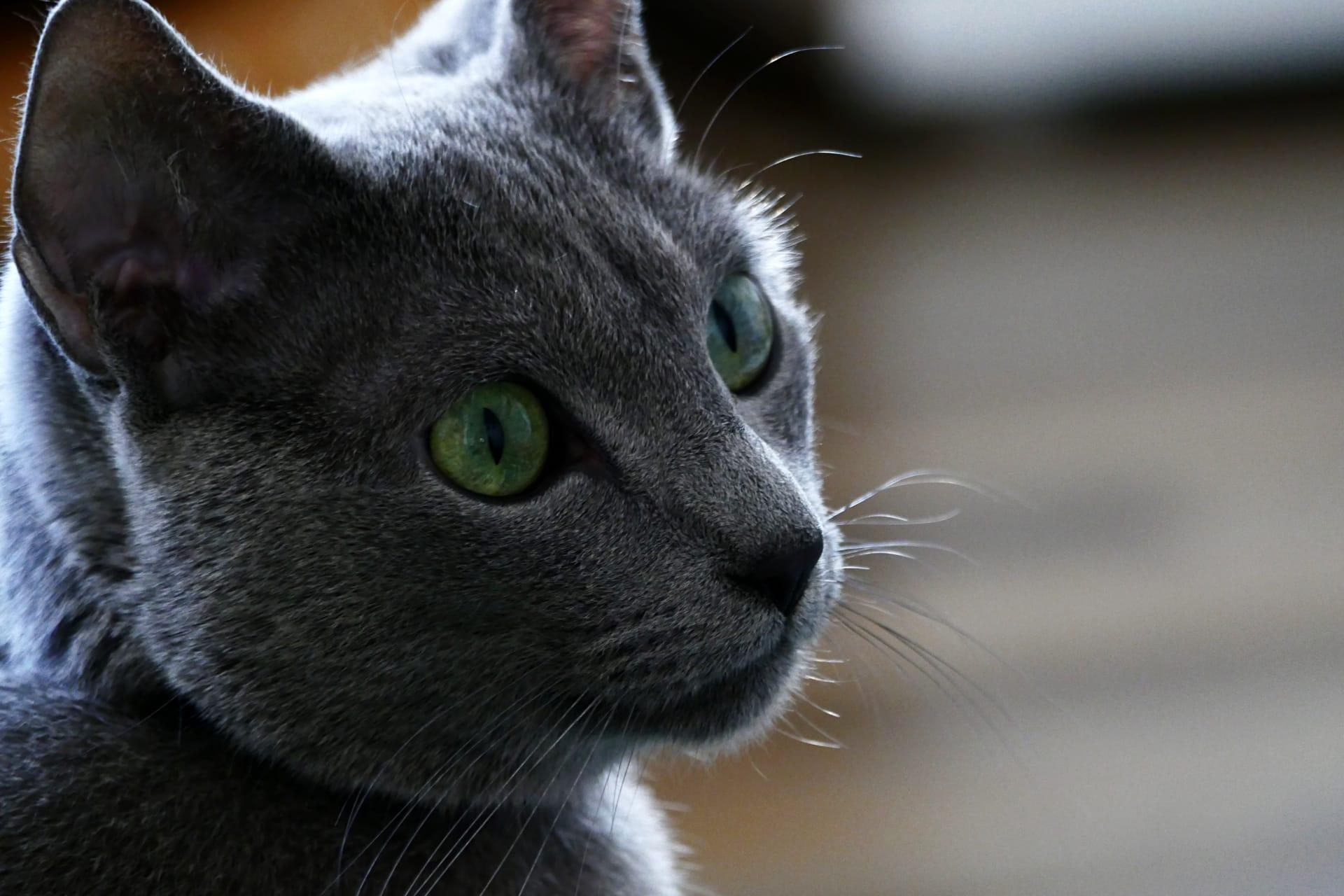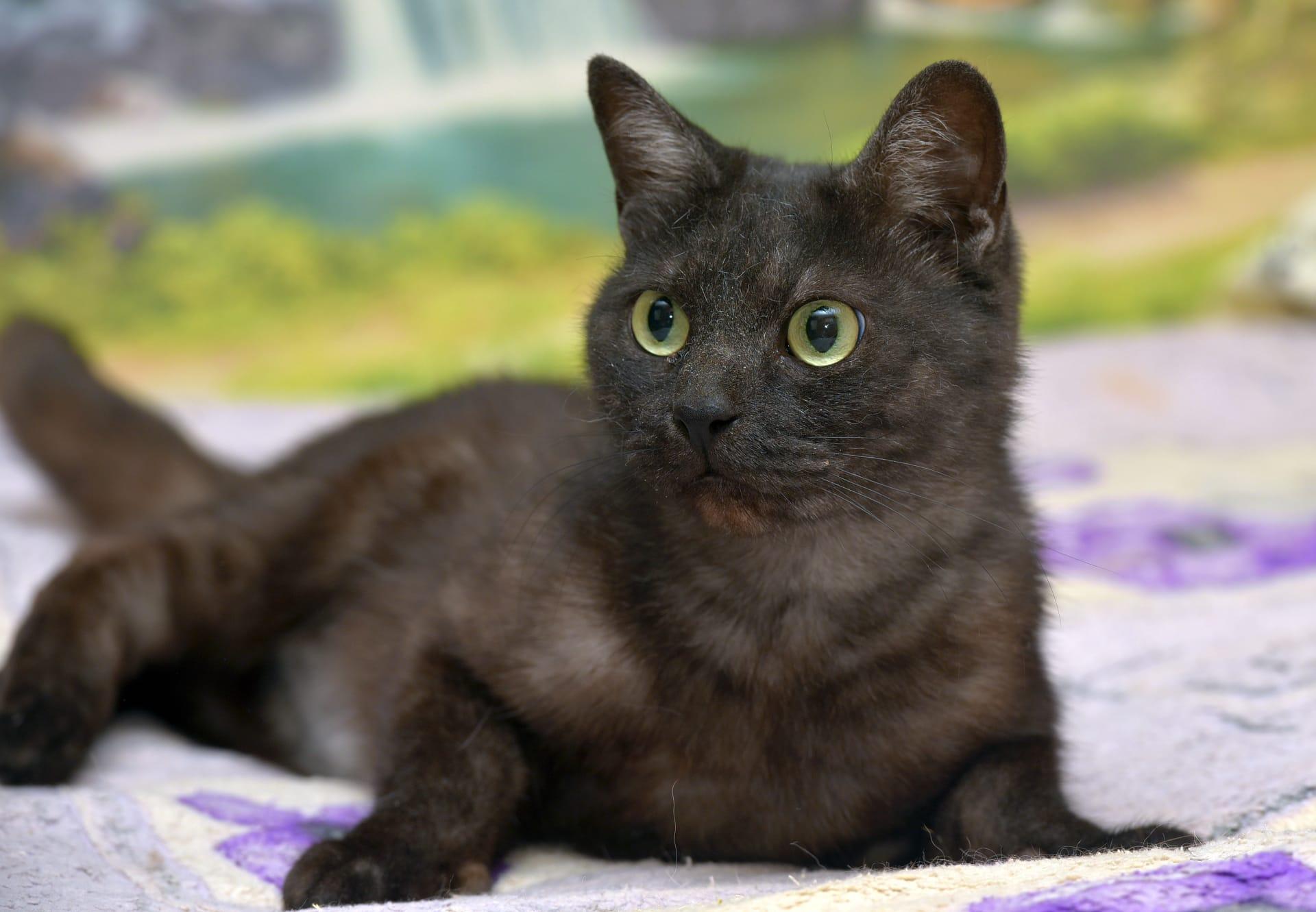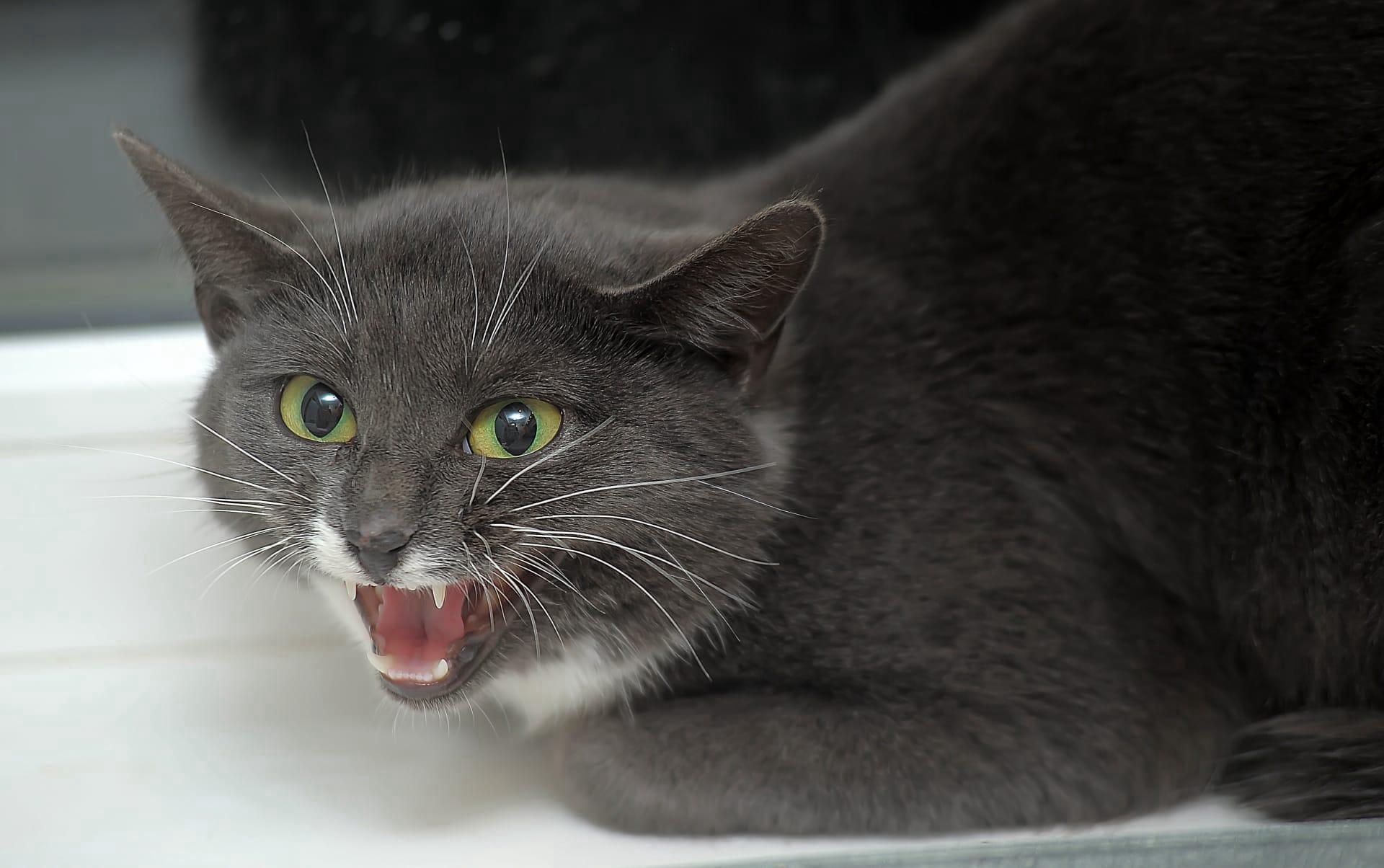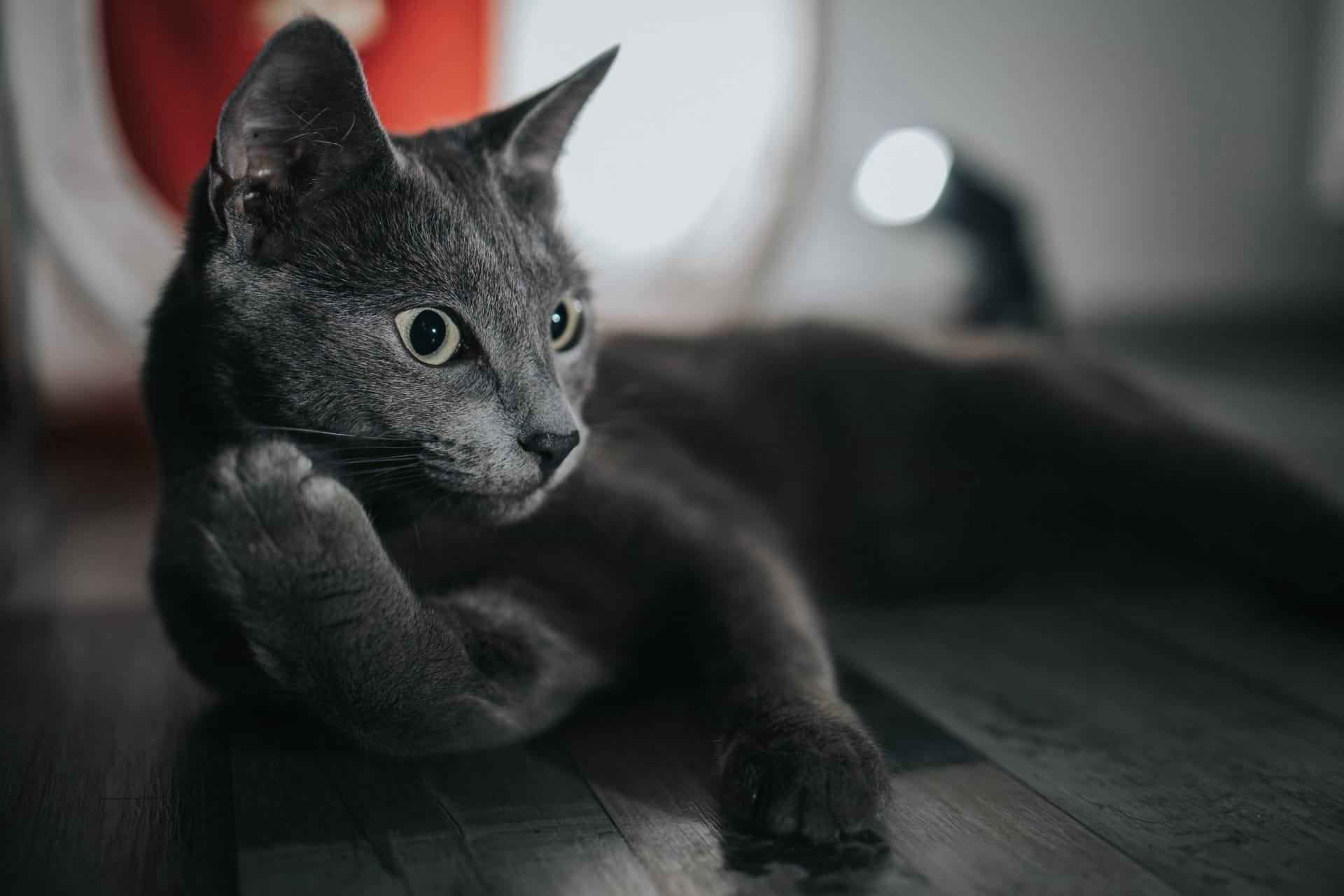Russian Blue Cat
- Home /
- Mini Encyclopedia /
- Animal /
- Russian Blue Cat
1
The Russian Blue Cat belongs to the domesticated species Felis catus, known for its distinctive plush blue-gray coat. This breed stands out with its dense, soft double coat that shimmers with a silvery sheen, attributed to the tips of its guard hairs being silver-tipped. The breed is characterized by its fine-boned elegant structure, long legs, and wedge-shaped head with large, rounded, wide-set ears and vivid green eyes. The breed's muscular body and slender appearance, combined with its striking coat color, make it a favorite among cat enthusiasts.
Russian Blues are found worldwide, but their exact origin is shrouded in mystery. It is believed that they originated in the Russian port of Arkhangelsk, hence the name. They were brought to Europe, particularly Great Britain, in the 1860s. Today, these cats are bred and recognized in countries across the globe, including the United States, United Kingdom, Australia, and Canada. Despite their name, the Russian Blue is a well-established breed far beyond Russia, adapting well to different climates and cultures.

2
Question: Is it true that Russian Blue Cats are hypoallergenic and cause fewer allergic reactions than other cat breeds?
Answer: While no cat breed is completely hypoallergenic, Russian Blue Cats are often considered to be among the breeds that may cause fewer allergic reactions. This belief is attributed to their double coat that is thought to trap allergens closer to the cat's skin, reducing the amount of allergens released into the air. However, it's important to note that individual reactions to cats can vary greatly, and potential pet owners with allergies should spend time with a Russian Blue before making a decision to bring one into their home.

3
Russian Blue Cats have a unique relationship with humans characterized by their reserved yet affectionate nature. They are known to be particularly loyal to their primary caretaker, often following them around the house and preferring their company to strangers. This breed is also appreciated for its intelligence and curiosity, which can lead to them opening doors or engaging in playful behavior. Their gentle and quiet demeanor makes them excellent companions, especially for those who appreciate a cat with a calm presence.
Despite their independent streak, Russian Blues form deep bonds with their human families. They tend to be shy around strangers but are incredibly loving and devoted once they feel secure. Their need for interaction varies; while they cherish quiet time, they also enjoy engaging in activities that stimulate their mental and physical abilities. Their playful yet unobtrusive nature makes them well-suited for both active households and serene environments.

4
The origins of the Russian Blue Cat are somewhat enigmatic, with tales suggesting they were the favored pets of Russian czars and aristocracy. The breed's elegant appearance and striking blue coat led to widespread admiration and lore. Historical records indicate that Russian Blues were exhibited at the world's first cat show at the Crystal Palace in London in 1871, where they captured public attention. However, it wasn't until after World War II that breeders in America and Britain began to specifically develop the breed's distinctive features, including its uniform blue coat and bright green eyes.
Over the years, selective breeding has emphasized the Russian Blue's unique characteristics, leading to the refined, elegant appearance seen today. Breeders have worked to maintain the breed's health, temperament, and the signature double-layered coat that distinguishes it from other blue-coated cats. Despite its ancient roots, the Russian Blue has evolved into a breed known for its gentle demeanor, intelligence, and stunning appearance, while retaining the robust health and adaptability that likely helped it survive and thrive in the harsh Russian climate.

5
Film: "The Secret Life of Cats" is a documentary produced in the United Kingdom in 2014. It explores the hidden lives of cats, including the Russian Blue, delving into their behaviors, instincts, and the evolutionary traits that have enabled them to become one of the most popular pets. The film offers insights into the unique characteristics that set the Russian Blue apart, including its history, distinctive appearance, and temperament.
Book: "The Elegance of the Cat: An Illustrated History" by Tamsin Pickeral (United Kingdom, 2012) features a comprehensive look at various cat breeds, including the Russian Blue. The author explores the breed's origins, its journey from Russia to becoming a beloved pet around the world, and what makes it unique. The book is richly illustrated, providing a visual feast that highlights the Russian Blue's elegant physique and striking coat.
Book: "Russian Blues: A Complete Pet Owner's Guide" by Ann Walker (United States, 2005) offers an in-depth look at the care, history, and characteristics of Russian Blue Cats. Walker provides practical advice for prospective and current owners on health care, nutrition, and behavioral training, alongside insights into the breed's personality, making it an essential guide for anyone interested in this beautiful cat breed.